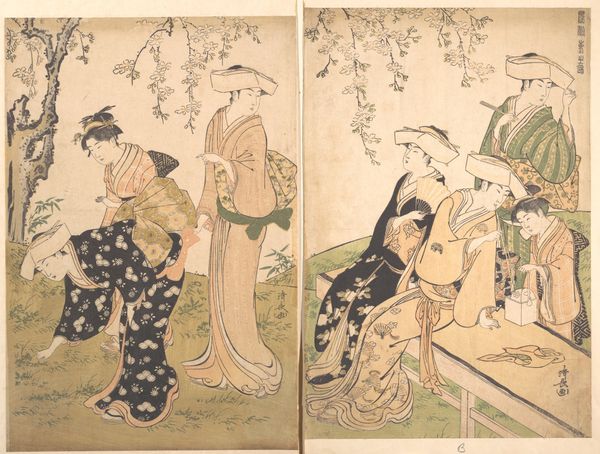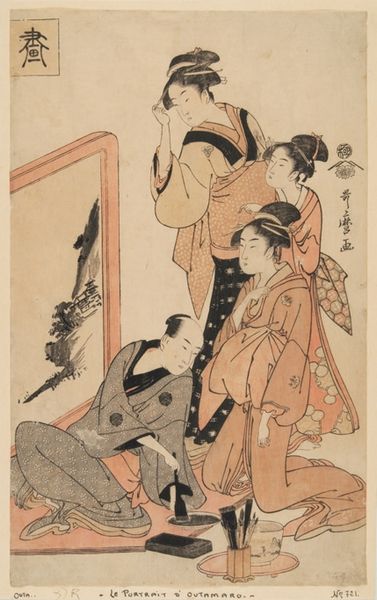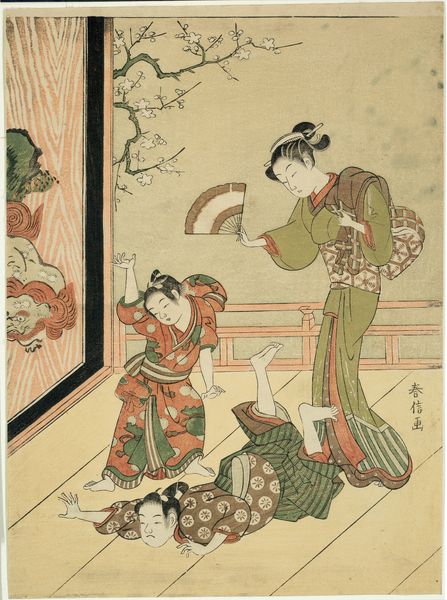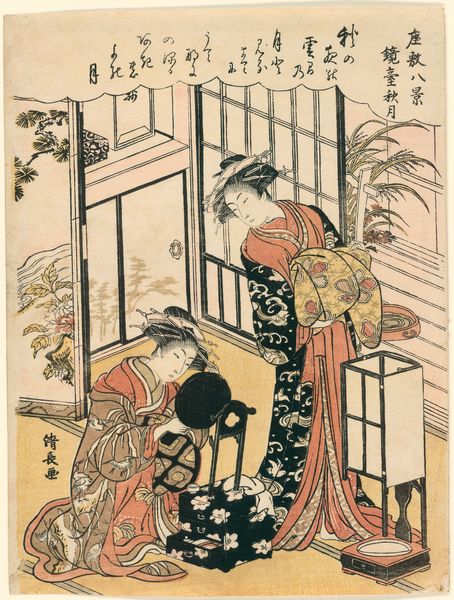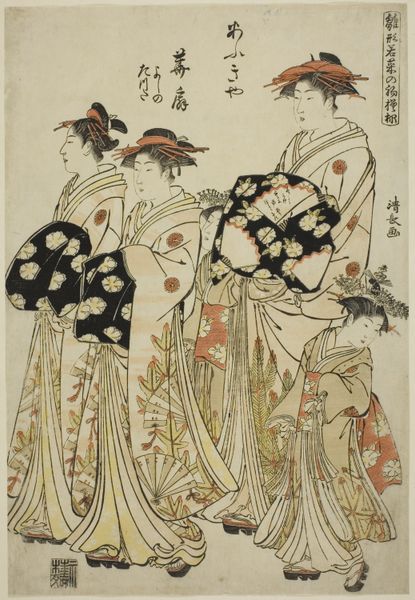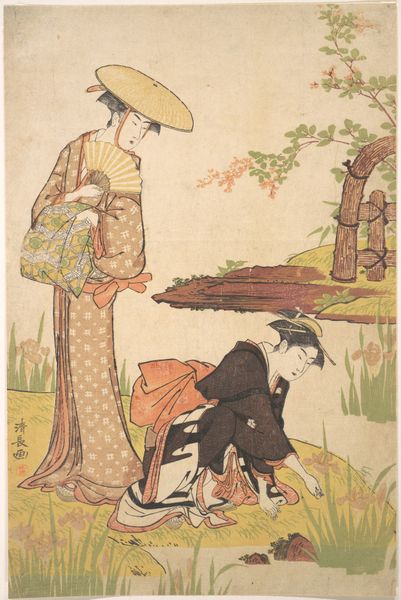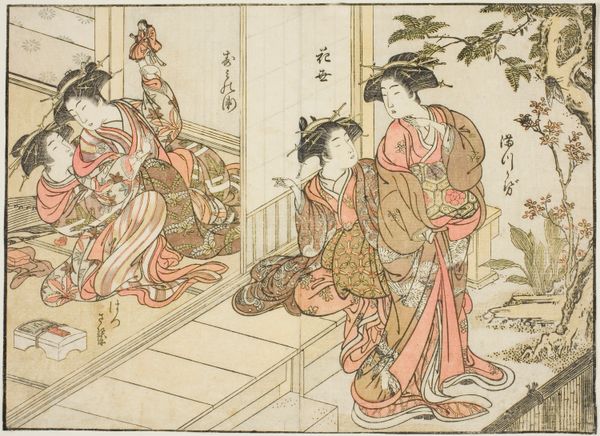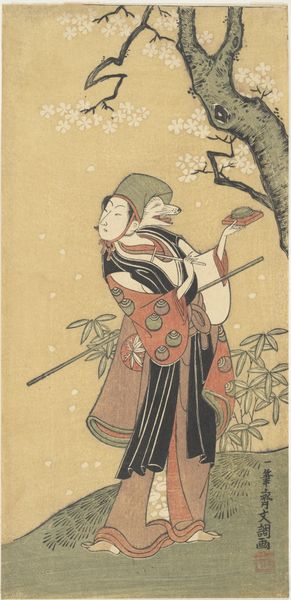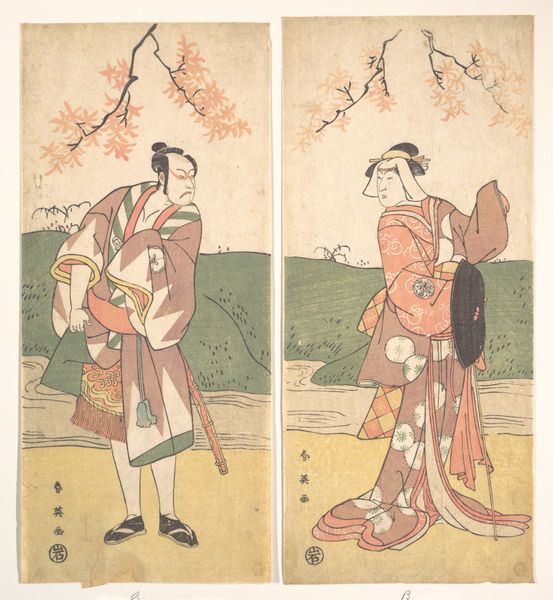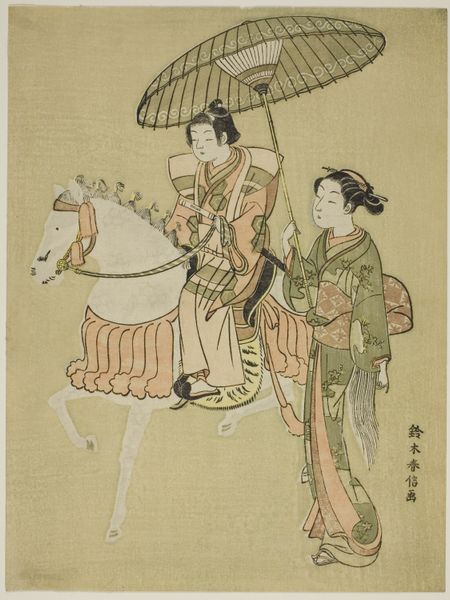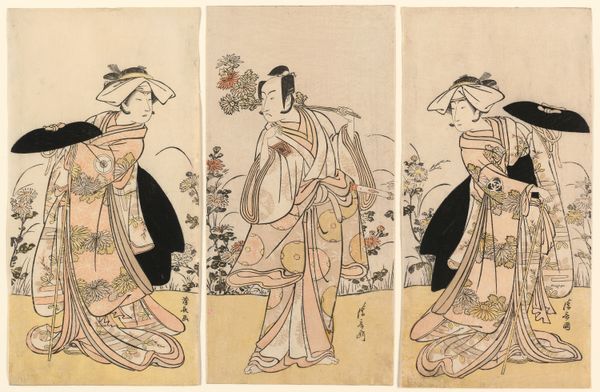
The Actors Iwai Hanshiro IV as Okume (right), and Ichikawa Monnosuke II as Koshiba Yukienojo Disguised as the Eboshi Seller Rokusaburo (left), in the Play Katakiuchi Adana Kashiku, Performed at the Nakamura Theater in the Seventh Month, 1779 c. 1779
0:00
0:00
# print
#
asian-art
#
ukiyo-e
#
japan
#
figuration
Dimensions: 30.4 × 14.8 cm (11 15/16 × 5 13/16 in.) (right), 30.4 × 15.2 cm (11 15/16 × 6 in.) (left)
Copyright: Public Domain
Editor: This is "The Actors Iwai Hanshiro IV as Okume (right), and Ichikawa Monnosuke II as Koshiba Yukienojo Disguised as the Eboshi Seller Rokusaburo (left), in the Play Katakiuchi Adana Kashiku," a Japanese woodblock print by Katsukawa Shunko from around 1779. I find the juxtaposition of the mounted figure and the standing figure really striking, almost theatrical. What do you see in this piece? Curator: Indeed! It's fascinating to consider how ukiyo-e prints like this one functioned as a form of publicity and cultural memory. The actors, though playing characters, were celebrities. Consider the objects accompanying them: the ox, the headdress, the drum, even the branches… each holds symbolic weight. Editor: Symbolic weight? Could you explain that a bit more? Curator: Certainly. Take the ox. It’s not merely a mode of transport; it signifies patience, strength, perhaps even stubbornness. The branches the rider holds suggest a particular season, adding another layer to the narrative embedded in the image. Does it evoke a particular mood for you, linking to themes in the play? Editor: Now that you mention it, there's definitely a sense of performance, heightened by the careful arrangement of symbolic objects. Perhaps a sense of determination despite adversity? Curator: Precisely! Ukiyo-e wasn’t just capturing a likeness; it was encoding a story, an emotion, and a shared cultural understanding through carefully selected and stylized symbols. Reflect on how such prints were consumed, how widely imagery circulated, and the ways theatre reflected values, fears, and social relationships. Editor: It’s amazing to think about all the layers of meaning embedded in what appears to be a simple print. Curator: It demonstrates the potency of visual language and invites contemplation on cultural values represented through objects. Each image served as a key, unlocking a deeper understanding of 18th-century Japan.
Comments
No comments
Be the first to comment and join the conversation on the ultimate creative platform.
